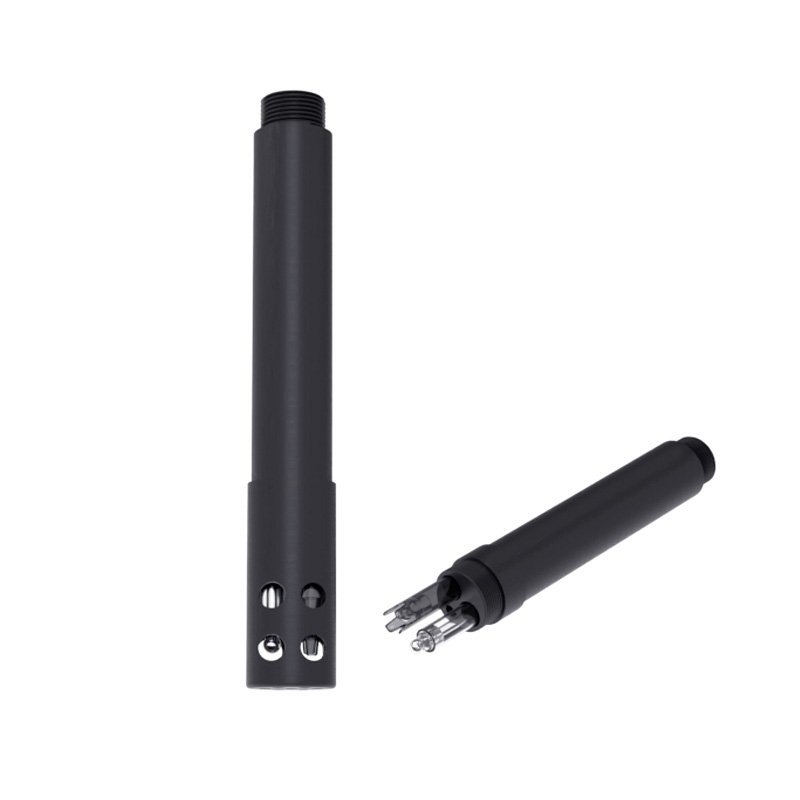Tianyi Sensor IOT Technology Co., Ltd
Sales Manager:Ms. Emily Wang
Cel,Whatsapp,Wechat:+86 15898932201
Email:info@fengtutec.com
Add:No. 155 Optoelectronic Industry Accelerator, Gaoxin District, Weifang, Shandong, China

Sales Manager:Ms. Emily Wang
Cel,Whatsapp,Wechat:+86 15898932201
Email:info@fengtutec.com
Add:No. 155 Optoelectronic Industry Accelerator, Gaoxin District, Weifang, Shandong, China

Model:FT-S4
Brand:tianyi
1.Residual Chlorine Sensor application environment description
Residual Chlorine Sensor is designed to measure the concentration of free chlorine or total chlorine in water systems for accurate and reliable measurement of free or total residual chlorine.Residual Chlorine Sensor is used in drinking water treatment plants, canning plants, drinking water distribution networks, swimming pools, cooling circulating water, water quality treatment projects, etc.where continuous monitoring of the residual chlorine content in the aqueous solution is required.
2.Technical parameters of Residual Chlorine Sensor
| PH sensor | ||
| Range and resolution | 0~14(PH) | 0.01 |
| Accuracy | ±0.1PH; ±0.3℃ | |
| Residual chlorine sensor | ||
| Range and resolution | 0~5.00 mg/L | 0.01 |
| Accuracy | ±5% of reading; ±0.3℃ | |
| Communication method | RS485 (MODBUS-RTU) | |
| Housing material | ABS | |
| Temperature compensation | Automatic temperature compensation | |
| PH Compensation | Automatic PH compensation | |
| Cable length | Standard 5 meters | |
| Power supply voltage | 12-24VDC (0.3W@12V) | |
| Waterproof grade | IP68 | |
| Installation method | Flow pool installation, 3/4NPT | |
3.Electrical connection of Residual Chlorine Sensor
1.Installation
Use a supporting flow cell to install the sensor and the flow cell to ensure that the sensor measurement part is placed near the water inlet of the flow cell.Try not to face the water outlet directly to ensure the flow rate is stable.It is recommended that the flow rate be controlled at 30-60L/h to ensure the accuracy of the test.
2.Electrical connection
The cable is a 4-core twisted pair shielded wire, with line sequence definition:
Red cable—Power cable (12~24VDC)l
Black line - ground line (GND)
Blue Line—485A
Green Line—485B
Note: The color of the cable may vary slightly depending on the production batch, and the specific color of the cable is subject to the silk screen printing.
Before powering on, carefully check the wiring sequence to avoid unnecessary losses caused by wiring errors.
4.Maintenance and maintenance
1.PH electrode
When used for the first time or not after a long time, the sensitive bulb and reference fluid should be immersed in 3.3 mol/L KCI solution for more than 2 hours.When using, wash and wipe dry with deionized water (or distilled water) to prevent impurities from being brought into the liquid to be tested.
The terminal part should be kept clean and dry.When the sensor is not in use, it should be cleaned.Insert the protective cover with 3.3mol/L KCI solution, or insert the sensor into a container with 3.3mol/L KCI solution.
Check whether the terminals are dry.If there are any stains, wipe them with anhydrous alcohol and continue to use them after drying.The sensor should avoid long-term soaking in deionized water, protein solutions, strong acid and alkali solutions, and acid fluoride solutions, and prevent contact with silicone grease.The sensor that has been used for a long time may become translucent or contain deposits.At this time, it can be washed with dilute hydrochloric acid and rinsed with water.
When the sensor has a long service life, it can be calibrated and corrected by matching the instrument.When the sensor is maintained and maintained by the above method, it means that the sensor has failed.Please replace the sensor.
2.Residual chlorine electrode
The new electrode and the long-standing electrode need to be activated before use, and the sensor is left to stand in tap water for 24 hours.If the return value is inaccurate, you need to do the following:
Calibrate the sensor by zero point and slope
Return to factory inspection
Dust particles such as PM2.5 and PM10 in airborne dust can penetrate deep into the human respiratory system, triggering respiratory diseases. Dust detectors, by real-time monitoring the concentration of dust particles in the air, provide precise data for pollution control and serve as key equipment...
Ultrasonic Portable Mini Wind Meter is a meteorological instrument used to measure air flow speed and direction. It consists of two parts: a wind speed and direction sensor and a data display unit....
Throughout the long history of human interaction with the natural environment, weather has always held a pivotal position. Since ancient times, people have sought to uncover the mysteries of weather changes to better arrange their lives and production activities. In ancient times, people accumulated...
The Wind Sensor employs the time-of-flight measurement principle, accurately calculating wind speed and direction by detecting changes in the speed of ultrasonic waves propagating in the air....